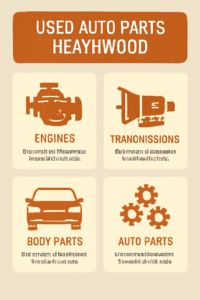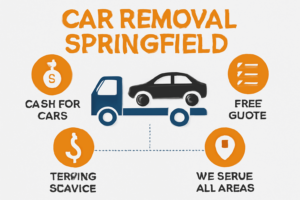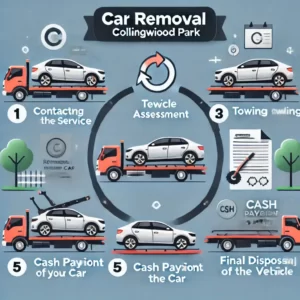Car removal is a process that involves taking away vehicles that are no longer in use or are deemed unfit for the road. Car removal is necessary for various reasons, ranging from safety concerns to environmental impact and legal compliance.
Safety Concerns
Abandoned or unused cars can pose significant safety hazards. These vehicles may attract unwanted attention, become a breeding ground for pests, or even pose a fire risk. Additionally, abandoned cars can obstruct traffic flow and emergency services access.
Environmental Impact
The presence of abandoned cars can have detrimental effects on the environment. Fluid leaks from these vehicles can contaminate soil and water sources, while rust and corrosion can release harmful substances into the air. Removing cars prevents further environmental degradation and allows for proper disposal or recycling of materials.
Legal Compliance
There are often legal requirements regarding the disposal of vehicles. Penalties or legal action may follow noncompliance with these regulations. One reason is that car removal ensures owners meet their legal obligations and avoid penalties for noncompliance.
Space Utilization
Unused cars take up valuable space that could be put to better use. Removing vehicles in residential areas, parking lots, or commercial property creates space for other purposes, such as landscaping, construction, or parking.
Financial Benefits
There can be financial advantages to car removal. Scrap yards may offer money for old vehicles; some parts may be valuable or resale. Additionally, removing unused cars can prevent costly repairs or fines associated with noncompliance.
Public Health
Abandoned cars can pose health risks to the public. They may harbor vermin, become breeding grounds for mosquitoes, or contain hazardous materials. Removing these vehicles improves public health by eliminating these potential hazards.
Community Aesthetics
The presence of abandoned cars can detract from the aesthetics of a community. They create eyesores that lower property values and discourage investment. Removing these vehicles improves the overall appearance of neighborhoods and promotes community pride.
Recycling Opportunities
Many components of cars can be recycled, including metals, plastics, and rubber. Car removal makes it possible to recover these materials, which minimizes the impact on the environment and lowers the need for new resources. Recycling also conserves energy compared to manufacturing new products from raw materials.
Professional Removal Services
Professional car removal services offer a convenient and efficient solution for removing unwanted vehicles. These companies have the expertise and equipment to transport and dispose of cars safely in compliance with regulations. Using such services ensures a hassle-free process for vehicle owners.
DIY Removal Metho s
For those looking to remove cars themselves, there are several essential considerations. Safety should be the top priority, with precautions to prevent injury during removal. Also, owners should know legal requirements and proper vehicle disposal methods.
Donation Options
Donating unwanted cars to charity is another option. Many organizations accept vehicle donations and use the proceeds to support their programs and initiatives. Donating a car is a meaningful way to give back to the community while benefiting from tax deductions.
Case Studies
Several successful car removal projects are examples of the positive outcomes that can be achieved. From urban revitalization efforts to environmental cleanup initiatives, these projects demonstrate the benefits of proactive car removal strategies.
Future Trends
The Reasons for Car Removal and recycling industry is constantly changing with new technology and procedures. Innovations such as electric vehicle recycling and advanced materials recovery offer promising opportunities for the future. By staying informed about these trends, stakeholders can adapt their practices to maximize efficiency and sustainability.
FAQS
While removing a car y yourself is possible, hiring a professional service is often safer and more efficient, especially for larger vehicles or difficult removal situations.
What happens to a car after it’s been removed?
The fate of a removed car depends on its condition and the policies of the removal service. It may be scrapped, recycled, or resold for parts.
Are there any financial incentives for removing a car?
Some scrap yards offer money for old vehicles; specific donation programs may provide tax deductions for donated cars.
Can I donate a car that’s no longer running?
Yes, many charities accept donations for non-running vehicles. However, checking with the organization beforehand ensures they can accommodate your truck.
Conclusion
Reasons for Car Removal is a vital process that addresses safety, environmental, and legal concerns associated with abandoned vehicles. By removing unused cars, communities can improve safety, protect the environment, and enhance their overall quality of life. Whether through professional services, DIY methods, or donation programs, options for responsibly disposing of unwanted vehicles are available.








